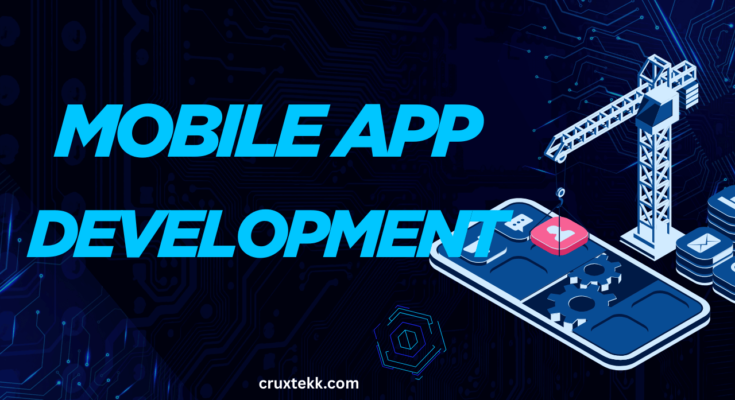In today’s digital-first world, mobile apps are more than just tools — they are a necessity. From online shopping to fitness tracking, apps have revolutionized how we interact with services and brands. If you’re looking to build a mobile app for your business or startup, this complete guide to mobile app development is your go-to resource. We’ll walk you through the entire development process, must-have tools, best practices, and insider tips to ensure your app stands out in a competitive market.
What is Mobile App Development?
Mobile app development is the process of creating software applications that run on mobile devices such as smartphones and tablets. It involves designing, coding, testing, and launching apps for platforms like iOS (Apple) and Android (Google).
There are three main types of mobile apps:
Native Apps: Built specifically for one platform using platform-specific languages (Swift for iOS, Kotlin for Android).
Cross-platform Apps: Created with frameworks like Flutter or React Native to work on both iOS and Android.
Web Apps: Mobile-optimized websites that function like native apps via a browser.
The Mobile App Development Lifecycle
Here’s a step-by-step breakdown of the mobile app development process:
1. Ideation and Market Research
Start by defining your app’s purpose, target audience, and unique selling proposition. Conduct competitor analysis and market research to identify opportunities.
2. Planning and Wireframing
Sketch the app’s layout using wireframes or mockups. Define the user journey, features, and app flow.
3. Designing the UI/UX
Create a visually appealing and user-friendly design. Prioritize intuitive navigation, accessibility, and responsiveness.
4. Choosing the Right Development Approach
Decide between native, hybrid, or cross-platform development based on your goals, timeline, and budget.
5. App Development
This involves front-end (user interface) and back-end (server, database) development. Use agile methodology to build in sprints and test each component.
6. Testing and Quality Assurance
Perform functional, usability, performance, and security testing. Tools like Appium, XCTest, or Espresso can be helpful.
7. Deployment
Publish the app to the Apple App Store or Google Play Store following their submission guidelines.
8. Post-launch Maintenance
Collect feedback, fix bugs, and roll out regular updates to keep users engaged and improve performance.
Popular Tools for Mobile App Development
- Android Studio – Official IDE for Android development
- Xcode – Apple’s IDE for iOS development
- Flutter – Google’s open-source UI toolkit for cross-platform apps
- React Native – JavaScript-based framework for building cross-platform apps
- Firebase – Backend-as-a-Service for real-time database, analytics, and more
- Figma/Sketch/Adobe XD – UI/UX design tools
Tips for Successful App Development
- Keep it user-centric – Solve a real problem for your target audience.
- Start with an MVP – Test your core idea with a minimum viable product.
- Focus on performance – Ensure your app is fast, secure, and bug-free.
- Prioritize design – A clean, modern design improves retention.
- Use analytics – Monitor user behavior and optimize accordingly.
FAQs About Mobile App Development
Q1. How long does it take to develop a mobile app?
It can take anywhere from 3 to 9 months, depending on complexity, features, and platform.
Q2. How much does mobile app development cost?
Costs vary widely — from $10,000 for a simple app to $100,000+ for complex apps with backend integration and advanced features.
Q3. Should I build for Android or iOS first?
It depends on your target audience. Android has a wider global market, while iOS users tend to spend more on apps.
Q4. Can I build an app without coding?
Yes! No-code platforms like AppGyver, Thunkable, and Adalo let you build basic apps with drag-and-drop tools.
Q5. What are the latest trends in mobile app development?
Some hot trends include AI integration, 5G-enhanced apps, IoT-enabled solutions, augmented reality (AR), and voice-enabled interfaces.
Conclusion
Mobile app development is a dynamic and rewarding journey that can transform your business and connect you with users globally. Whether you’re developing a simple tool or a feature-rich application, understanding the process and choosing the right tools is key. With this complete guide to mobile app development, you’re well-equipped to take your app idea from concept to reality.




